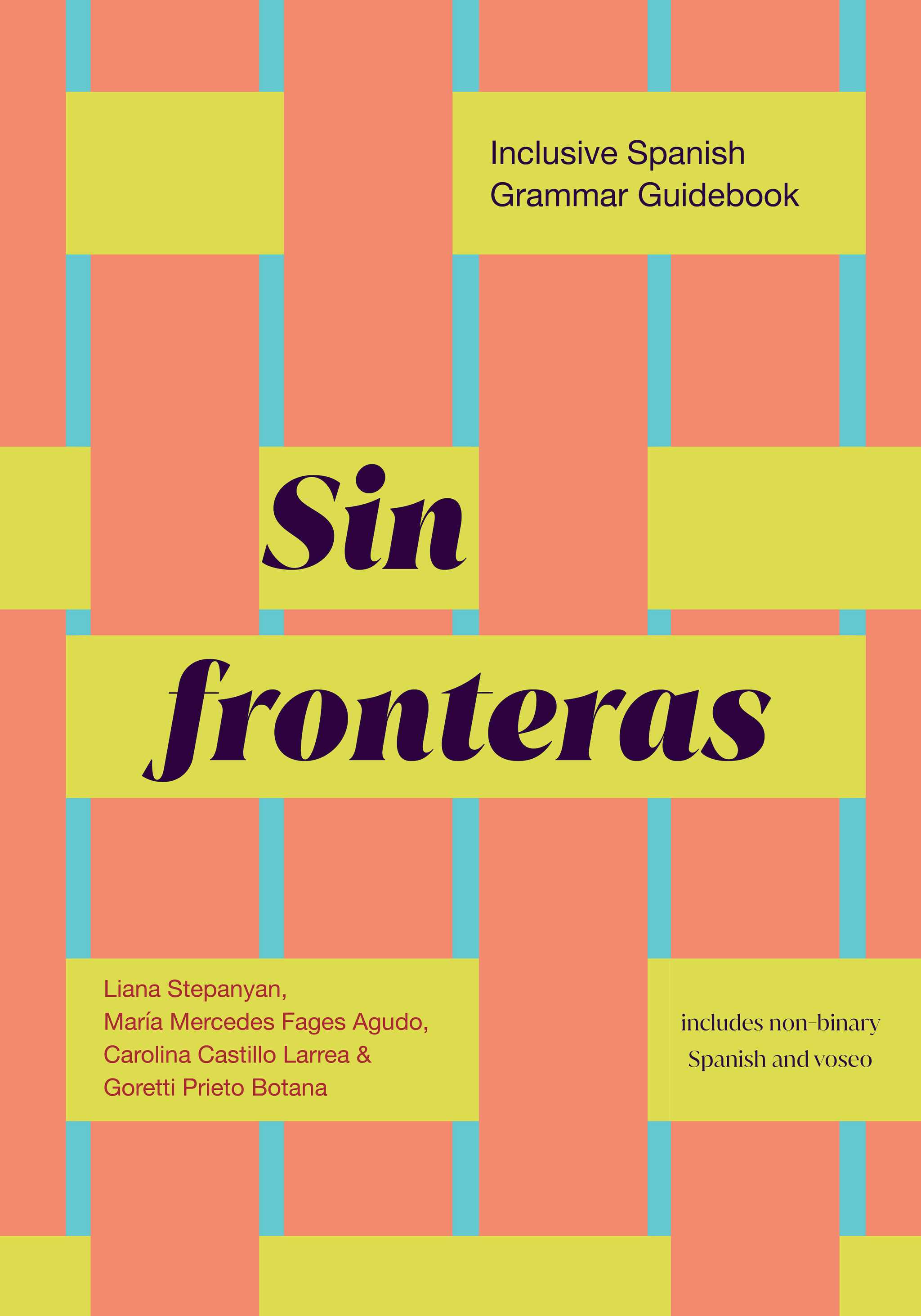Starting a More Inclusive Spanish Language Learning Conversation
The authors of Sin fronteras: Inclusive Spanish Grammar Guidebook on embracing diversity in the classroom
Embracing Diversity: Non-Binary Spanish and Voseo
Considerable work remains to be done in developing pedagogical approaches, curricula, and educational materials in Spanish that are inclusive and embrace diverse identities and expressions. We believe our collective responsibility as educators is to continue to engage in conversations and research that challenge the many exclusionary practices reflected in traditional Spanish language instruction. In the following blog post we introduce and reflect on the potential applications to the classroom and beyond of our book, Sin fronteras: Inclusive Spanish Grammar Guidebook, recently published by Amherst College Press.
Why Sin fronteras?
Sin fronteras takes a pioneering approach to Spanish language instruction by including non-binary language and voseo, and empowering learners to develop the competencies necessary to thrive in the increasingly interconnected and diverse world. Intended to accompany intermediate- and advanced-level Spanish language instruction, this book provides concise explanations for all major clausal structures, tenses, and moods. For each of these linguistic elements, and wherever applicable, the volume reports on how to use non-binary language and voseo.
Sin fronteras also expands the scope of traditional grammar instruction by including unique tasks on reading, writing, partner conversations, discussions, and independent research that are inclusive. The reading section in every chapter of Sin fronteras presents authentic texts to contextualize and expand on the linguistic phenomena examined in the grammar section. Here, too, the book focuses on topics pertaining to various aspects of non-binary identities and the use of voseo. The culminating point of each chapter is a writing assignment that calls for the learned structures to be produced at the paragraph level and allows the learner to hone writing skills while synthesizing and reflecting on the information presented in the chapter.
Versatile Applications; Accessible Learning Formats
Sin fronteras may be used by both educators and independent language learners. Educators may choose to supplement lower and upper division courses with select chapters of Sin fronteras, or use it in its entirety in classes for heritage speakers, classes focused on special topics (e.g., medical Spanish, Spanish for business), conversation classes, as well as literature classes taught in Spanish and courses based on Open Educational Resources. Independent learners can use this book to broaden their knowledge of the various linguistic forms that Spanish affords and engage with texts spanning a wide range of topics, from everyday life and music to history and identity.
Available in open-access, digital format as well as for purchase as a print book, Sin fronteras aims to empower educators and learners by reducing financial barriers and supporting different learning styles, abilities, and accessibility needs with the goal of promoting a more equitable educational experience. This book's format and versatility allow instructors and independent learners to tailor it to their goals. Hypothesis, the integrated digital annotation tool available on the publishing platform Fulcrum, helps provide detailed feedback and facilitates collaborative learning.
Starting a More Inclusive Conversation
This book expands the scope of traditional grammar instruction by including tasks such as reading, writing, discussions, and independent research in order to support the development of the competencies necessary to thrive in the increasingly interconnected and diverse world. This volume does not claim to offer an exhaustive representation of the current state of Spanish; rather, its goal is to serve as a tool for a more inclusive approach in Spanish pedagogy in order to propel the conversation further on the matter of binarism, diversity, and inclusion.
Read, download, teach from, and learn with Sin fronteras for free here.
*
Liana Stepanyan is professor (teaching) of Spanish and coordinator of Spanish III, at the University of Southern California. Her research focuses on second-language acquisition, non-binary language, and the inclusion of primary sources in courses.
María Mercedes Fages Agudo is master lecturer and coordinator of Spanish II at the University of Southern California. Fages Agudo is also the director of Feliz en la Comunidad, a service-learning program.
Carolina Castillo Larrea is associate professor (teaching) of Spanish at the University of Southern California. Her main focus is language acquisition and teaching methodology.
Goretti Prieto Botana is the director of the Spanish language program at the University of Southern California. Her research interests include grammar-related learnability issues, explicit forms of instruction, and task-essentialness.
